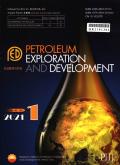A transient production prediction method for tight condensate gas wells with multiphase flow
Abstract
Considering the phase behaviors in condensate gas reservoirs and the oil-gas two-phase linear flow and boundary-dominated flow in the reservoir, a method for predicting the relationship between oil saturation and pressure in the full-path of tight condensate gas well is proposed, and a model for predicting the transient production from tight condensate gas wells with multiphase flow is established. The research indicates that the relationship curve between condensate oil saturation and pressure is crucial for calculating the pseudo-pressure. In the early stage of production or in areas far from the wellbore with high reservoir pressure, the condensate oil saturation can be calculated using early-stage production dynamic data through material balance models. In the late stage of production or in areas close to the wellbore with low reservoir pressure, the condensate oil saturation can be calculated using the data of constant composition expansion test. In the middle stages of production or when reservoir pressure is at an intermediate level, the data obtained from the previous two stages can be interpolated to form a complete full-path relationship curve between oil saturation and pressure. Through simulation and field application, the new method is verified to be reliable and practical. It can be applied for prediction of middle-stage and late-stage production of tight condensate gas wells and assessment of single-well recoverable reserves.

 求助内容:
求助内容: 应助结果提醒方式:
应助结果提醒方式:


